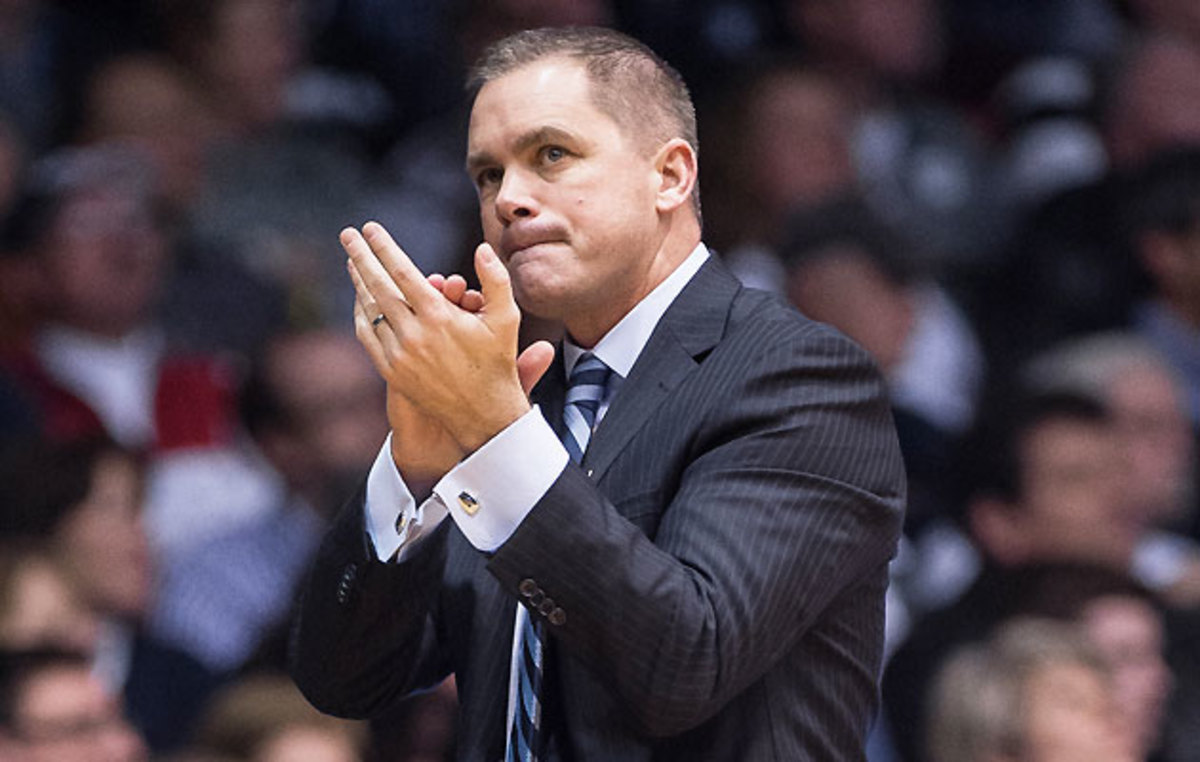Chris Holtmann has helped Butler rediscover its Way this season

After a November evening practice at renovated Hinkle Fieldhouse, Chris Holtmann was a man who didn’t know what he had gotten himself into. The 43-year-old was now the interim head coach of a Butler program in turmoil: The Bulldogs had gone from back-to-back Final Fours in 2010 and 2011 to a losing campaign in their first Big East season, and now coach Brandon Miller was on an unexpected leave of absence with no clear date of return. Holtmann couldn't have imagined any of this when he joined the program as an assistant a year earlier.
He and his team were left with no choice but to figure it out as they went, which pretty much served as the mission statement for the coming season anyway.
“We didn’t respond the best to adversity last year,” Holtmann said in November. “As with every team, you’re going to get hit with some adversity, and that’ll be a challenge for us to see how we respond.”
[daily_cut.college basketball]As it turned out, Butler found its Way again. A 22-win regular season and a return to the national polls followed, along a very similar script to what propelled the program into national prominence in the first place. It is a cohesive, coherent unit—something that players couldn’t truthfully say was the case a year ago. Butler once again plays resolute defense, ranking in the top 10 nationally in efficiency on that end after ranking a so-so 66th last season. And there are just enough capable playmakers to produce on the offensive end.
It is a formula very similar to the one that led to the first Final Four season under coach Brad Stevens in 2009-10, and it is one that makes Butler a darkhorse contender to play in the national semifinals again this April, just down the road from campus in Indianapolis.
As comfortable as Stevens had appeared to be at Butler, he was destined to leave at some point. “Some point” came when the Boston Celtics dangled a reported six-year, $22 million contract in front of him in July 2013. Even if the school didn’t see that particular end coming, officials had to recognize the basketball program eventually would exist without the wunderkind coach who took it from good to great.
• MORE CBB: SMU ready for tourney return after last year's snub
The plunge from great to good to chaotic occurred far quicker than anyone hoped, as if the program was riding an elevator car when the cable snapped. Butler won 27 games in Stevens’ last season and then just 14 in the season after he left. The 4-14 Big East record in Miller’s year at the helm was replete with frustrating near-misses; the Bulldogs played four overtime games in their first six league contests and lost three of them. The team never pulled out of the spiral, and in early October, just hours before official practices were to begin, the school announced Miller would take an indefinite leave of absence for health reasons.

That left Holtmann, who had been Gardner-Webb’s head coach for three seasons before he took the assistant gig at Butler, as an accidental Mr. Fix-It. To accomplish that, he ratcheted up drills aimed at building toughness and grit on the roster, to re-infuse it with some purpose. When the Bulldogs surprised many with early wins over Georgetown and North Carolina, it looked as if the philosophy had taken hold. The quick rebuild was aided perhaps most of all by the availability of Roosevelt Jones, who had missed the entire 2013-14 season with wrist injury and who was one of the most unorthodox but productive players on the college level.
The 6’4” Jones is no deadeye shooter—he has hoisted just one three-pointer in his entire college career—but his ability to penetrate, facilitate and finish with nifty maneuvers around the rim is remarkable. When he was went down in 2013-14, Butler came glue guy. It now has that again, with Jones averaging 12.9 points, 5.2 rebounds and 3.7 assists during the regular season, using a team-high 24.6% of possessions.
• MORE CBB: Turgeon deserves credit for Maryland's turnaround
Essentially, all the parts that crumbled last winter realigned this season. Sophomore guard Kellen Dunham reestablished himself as a go-to scoring outlet, averaging 16.6 points per game and hitting 42.4% of his three-point attempts. Senior forward Kameron Woods became a force on the glass, averaging 9.6 rebounds per game. Andrew Chrabascz and Alex Barlow were productive complementary pieces, and the Bulldogs even managed to stitch together a second-place finish in the Big East despite losing Chrabascz, its third-leading scorer, to a broken finger for four games in February. It is unlikely a different group would have mustered that sort of resolve a year ago.
Butler has the nation’s 10th-most efficient defense to pair with the country’s 61st-ranked offense. In 2010, when the program made its Final Four breakthrough, the defense ranked second nationally with an offense that ranked 57th. Even after Stevens’ departure, and even after a disappointing season followed by profound coaching uncertainty, the program didn’t lose its formula for long. The Butler Way is cleared of roadblocks once more.
